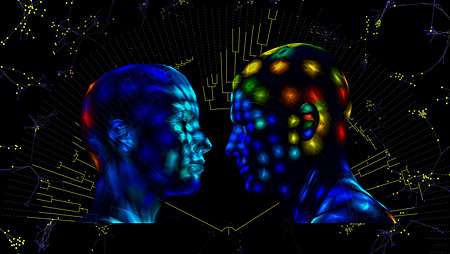3-D human skin maps aid study of relationships between molecules, microbes and environment

Researchers at the University of California, San Diego Skaggs School of Pharmacy and Pharmaceutical Sciences used information collected from hundreds of skin swabs to produce three-dimensional maps of molecular and microbial variations across the body. These maps provide a baseline for future studies of the interplay between the molecules that make up our skin, the microbes that live on us, our personal hygiene routines and other environmental factors. The study, published March 30 by Proceedings of the National Academy of Sciences, may help further our understanding of the skin's role in human health and disease.
"This is the first study of its kind to characterize the surface distribution of skin molecules and pair that data with microbial diversity," said senior author Pieter Dorrestein, PhD, professor of pharmacology in the UC San Diego Skaggs School of Pharmacy. "Previous studies were limited to select areas of the skin, rather than the whole body, and examined skin chemistry and microbial populations separately."
To sample human skin nearly in its entirety, Dorrestein and team swabbed 400 different body sites of two healthy adult volunteers, one male and one female, who had not bathed, shampooed or moisturized for three days. They used a technique called mass spectrometry to determine the molecular and chemical composition of the samples. They also sequenced microbial DNA in the samples to identify the bacterial species present and map their locations across the body. The team then used MATLAB software to construct 3D models that illustrated the data for each sampling spot.
Despite the three-day moratorium on personal hygiene products, the most abundant molecular features in the skin swabs still came from hygiene and beauty products, such as sunscreen. According to the researchers, this finding suggests that 3D skin maps may be able to detect both current and past behaviors and environmental exposures. The study also demonstrates that human skin is not just made up of molecules derived from human or bacterial cells. Rather, the external environment, such as plastics found in clothing, diet, hygiene and beauty products, also contribute to the skin's chemical composition. The maps now allow these factors to be taken into account and correlated with local microbial communities.
"This is a starting point for future investigations into the many factors that help us maintain, or alter, the human skin ecosystem—things like personal hygiene and beauty practices—and how those variations influence our health and susceptibility to disease," Dorrestein said.
More information: 3D molecular cartography of the human skin surface, PNAS, www.pnas.org/cgi/doi/10.1073/pnas.1424409112


















